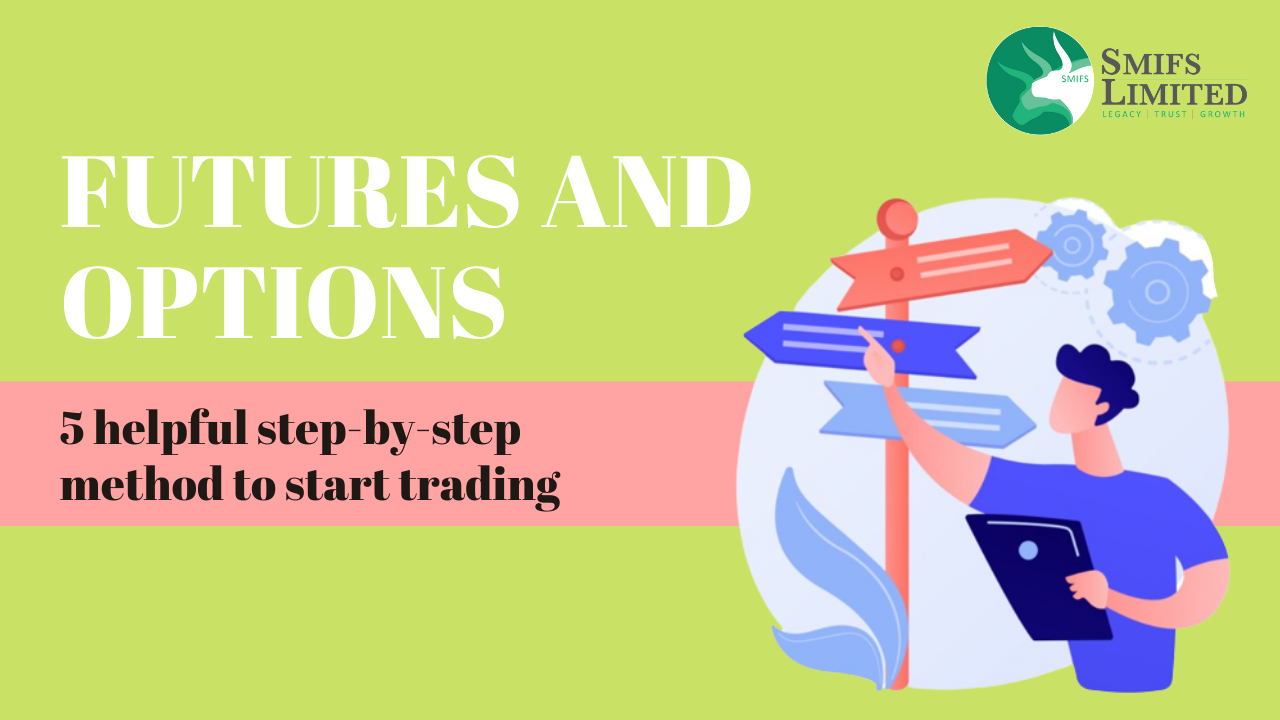About 99.9% of people who are actively involved in share trading are into Futures and Options. Want to know why? – High returns, less risk and cost-efficient. For those who are new to the topic, here’s a brief on the matter. Trading in Futures and Options is much more complex than equity or other derivative. Therefore, a detailed introduction on the topic is required for better understanding of its benefits.
What is Futures and Options?
The Futures and Options derivatives that have their prices derived from an underlying asset. These underlying assets, like shares, stocks market indices, ETFs, etc provide individuals with reduced risk due to the pre-determined prices. The chances of profit are much more under the derivative of futures and options.
For a Future contract, an investor is required to follow-up a contract by a pre-set due date. This contract is followed up on a pre-determined date at a contractual price. Under a future contract, the buyer and the seller are bound to follow the contract till the end of the expiry date. The elements under this are:
- Commitment of the buyer and the seller
- The trading of the underlying asset between the two
- The existence of a pre-determined price
- A fixed date scheduled for conducting the trade
While the buyer of the contract is bound to buy the asset, the seller is also bound to sell the asset. And since the seller expects the price to fall in the future, both the buyer and the seller negotiate on mutual terms and set a price.
Option on the other hand, is a derivative contract. Here, the investor of the respective contract can buy or sell the stocks of a given company at a predetermined price, on a predetermined date. But, this right is applicable, only for the buyer and not the seller.
Under the option contract, certain elements are to be maintained. These include:
- The buyer’s right for the option contract
- The trade between the underlying asset of the two parties
- The existence of a pre-determined price
- Determining the date for the trade to occur
Difference between Futures and Options
Both the contracts of Futures and Options differ from one another in many aspects. These are:
1. Obligation: Under a Futures contract, the buyer is bound to buy the asset on a fixed date. But, under Options contract, the buyer may buy the contract before its expiration date.
2. Risk: The future contract holder has to buy the contract irrespective of the profit and loss status of the security. The price shall always remain the same and shall be incurred by the buyer himself. On the other hand, if the price of an option contract falls, the buyer can skip buying the security to avoid losses. For a future contract, the profit and loss ratio can be magnified, but for an option contract, there are more chances for profit and a lesser chance for loss.
3. Advance payment: Under a Futures Contract, the buyer will have to pay the price, after the delivery of the security, favorable or not. Under an Option Contract, if the strike price is more than the spot price, then the buyer is at a profit. But, if the strike price is less than the spot price, then the buyer will have to hold lose the amount of the premium.
4. Contract Execution: A Future holder cannot exercise his/her trade before the expiration period. In case of Option, exercising of the trade may vary upon the underlying asset. For index option, the holder can only exercise his trading on the expiration date, but for stock option, the holder can exercise it anytime within the expiration date if it is found that the contract is ‘in the money’.
Types of Option
There are two types of option –the Call option and the Put Option. The Futures contract on the other hand, does not have any types.
Call Option
In this contract, the buyer has the right to purchase any underlying asset (index, stocks, bonds, etc) at a previously determined price, and within a predetermined time range. The trade is bullish in this scenario because the share price is expected to rise. The ‘call option’ will always be associated with three elements-
- The Strike price- The negotiated price of the contract buyer and seller
- The exercised date- The date on which the contract is to be exercised
- Premium- The amount that is to be paid, depending on the strike price of the underlying asset and the volatility of the stocks
This call option is further divided into two parts- the Long Call Option and the Short Call Option.
Long Call Option:
This call is most used by investors while buying an option. In most cases, it focuses on the underlying asset’s spot/market price to increase at a faster rate than the strike price. Investors will always have to pay a premium for the bought stocks. They are likely to earn more profit if the strike price is lower than the spot price. In case the strike price rises above the spot price, the investor shall lose the entire amount paid as premium.
Short Call Option:
Under this option, the investor can sell a purchase under a pre-determined price and within a pre-determined time period. The stocks if sold at a price which is lower than the strike price, will lead to limited profit. If the stock is sold at a price higher than the strike price, it will cause substantial loss. This call option is executed only if the contract is about to expire out of the money.
Put Option
The exact opposite of Call Option is Put Option. Here, the contract seller is going to earn a profit if he/she finds a party who is ready to buy the stock at the strike price (and the strike price is more than the spot price). The scenario here is bearish for those who are investing in this contract expect a fall in the price of the stocks. The premium, in this case is also expected to rise, compared to when the stock was bought at the strike price.
It also consists of 3 elements:
- The Strike price- The negotiated price of the contract seller and buyer
- The exercised date- The date on which the contract is supposed to be exercised
- Premium- The amount that is to be paid, depending on the strike price of the underlying asset and the volatility of the stocks
Futures and Options ban
Under the Futures and Options Segment, if any stock rises above 95% of open interest in Market wide position limit (MWPL), exchange forces a ban on that particular stock. The investor will only be able to start investing in this segment if the open interest of MWPL reduces to 80% and below.
In case, an investor invests in that particular stock within the ban period, he is likely to be charged a penalty, starting for 5000 INR.
5 Easy Steps to Trade in Futures and Options
The first thing for activating Futures and Options segment is to open a Free Demat Account with SMIFS.
- Complete your e-KYC process and activate ‘Futures and Options’ segment in the ‘Trading preference’ page.
- Download ‘SMIFS ELITE’ app from Play store and App Store.
- Enter your User ID, Password and PAN Number/Mobile number/DOB. Click on ‘Login’. The password will be sent to you via SMIFS. You can reset in anytime.
- Under your dashboard, you will have to create a watch-list, consisting of the stocks you have invested in.
- If you want to invest in a new stock under F&O, go to the search menu and type the name of the stock. For call option, select the stock name with ‘CE” and for put option, select the stock name with ‘PE’.






